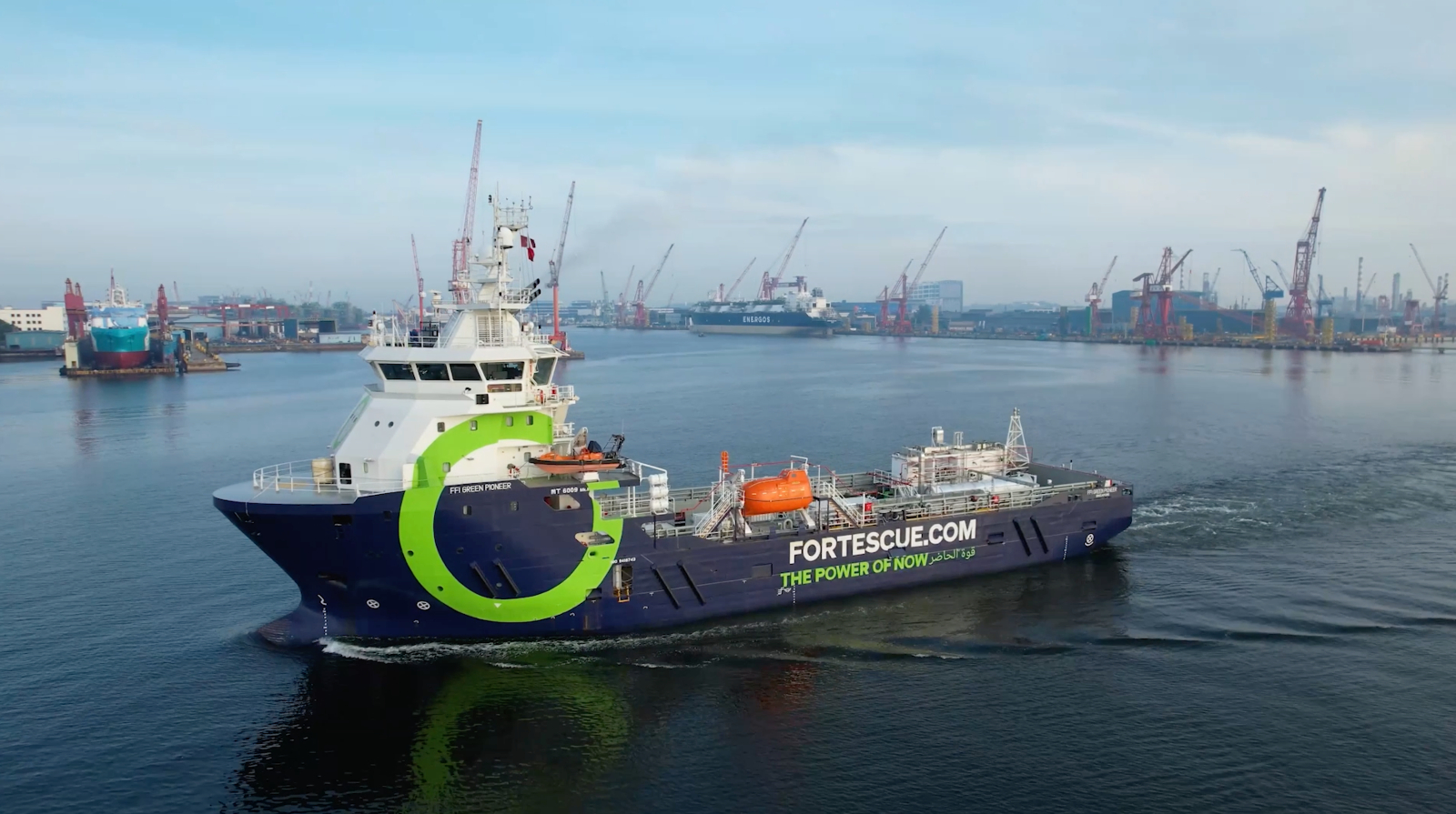Sign up for daily news updates from CleanTechnica on email. Or follow us on Google News!
Minesto is one of those companies that takes a natural phenomenon and builds on it to create new technology for making renewable energy. Reduced to its essence, the founders of the company noticed nearly twenty years ago that a kite has a tendency to travel in a figure eight pattern when aloft. As it swoops and dives, it exceeds the speed of the wind around it. A similar principle has been adopted by racing sailboats that are now able to go as much as 60 mph when the wind is only blowing about 15 mph.
The Minesto generator takes that principle and applies it to an underwater device that is similar to a kite. When placed in a tidal stream of flowing water, it also travels in a figure eight pattern to accelerate the flow of water over its wings, which multiplies the output of its turbine.
Minesto & The Dragon 12
Minesto was founded in 2007 as a spin-off from Swedish aerospace manufacturer Saab. Since then, Minesto has successfully developed its unique technology and acquired 92 patents in 12 patent portfolios covering all relevant markets. On February 9, 2024, the company announced its utility-scale tidal power plant called Dragon 12 — which has an output of 1.2 MW — has been successfully commissioned and is delivering its first electricity to the national grid in the Faroe Islands.
The Dragon 12 is twelve meters (39 feet) wide and weighs 28 tons. It is anchored with a tether to the seabed, where it is steered in a figure eight flight trajectory by the tidal flow. The site in the Faroe islands was chosen because the tides there are some of the strongest in Europe. Minesto’s technology has been undergoing extensive development and ocean testing since 2013.
“This is a big day for Minesto. We have reached the most significant milestone in the history of the company by producing electricity to the grid with our mega-watt scale powerplant. We are both proud and happy and more than ever look forward to the journey ahead,” said Dr Martin Edlund, CEO of Minesto. “What the Minesto team has achieved today is extraordinary and set a new agenda for renewable energy build-out in many areas of the world. The competitiveness of the Dragon 12 is straight to the point. It is powerful, cost effective and feeds predictable electricity to the grid.”
The output of the Minestro Dragon 12 is about one third that of a typical offshore wind turbine, but it is much less costly and easier to install. The entire device fits into a standard shipping container. The company expects the levelized cost of electricity from the device to be $54 per MWh. In comparison, the LCOE of a fixed offshore wind turbine in 2022 was $89 per MWh according to the US Department of Energy. Some offshore wind installations have an LCOE as low as $40 per MWh, some are well over $100 per MWh. The distance from shore and various engineering challenges can have a large effect on that figure.
The company says what makes its technology different from other tidal energy technologies is the wing, the size of the turbine, and the fact that the power plant is “flying” under water. The speed has a cubic relationship to the power production. Because the Dragon 12 multiplies the relative speed at which the turbine is pushed through the water, the electricity produced by the generator is several times greater compared to what it would be if the turbine was stationary. That in turn expands the potential to create renewable energy from global tidal and ocean currents.
Part Of The Energy Mix

A balanced renewable energy mix is crucial to advancing the global transition towards a sustainable energy system, the company says. Tidal streams and ocean currents are reliable and inexhaustible (there are some who might disagree on that point) and available all over the globe. To exploit this immense renewable resource, the Dragon 12 was developed to be lightweight, modular, and scalable. This unlocks a predictable renewable energy resource.
Minesto’s technology generates electricity from tidal streams and ocean currents by a unique and patented principle similar to a kite flying in the wind. The wing uses the hydrodynamic lift force created by the underwater current to move the kite. With an onboard control system, the kite is autonomously steered in a predetermined figure eight trajectory, pulling the turbine through the water at a flow rate several times higher than the actual speed of the water. The turbine shaft turns the generator which outputs electricity to the grid via a power cable in the tether and a seabed umbilical to the shore.
Pluses & Minuses
The Minesto underwater turbine is conceptually brilliant. It leverages principles of physics to amplify the power of flowing water, creating more electricity than a stationary tidal generator could. It does require a tether to the sea bottom and a subsea cable to bring the electricity to shore, but that tether is not subject to the same stresses as a floating wind platform might encounter, which has to be able to handle large storm-driven waves. The Dragon 12 remains submerged where the water is less likely to be roiled by conditions on the surface, much as a submarine is protected when underwater.
On the downside, Minesto has provided no information about how the Dragon 12 is serviced once in operation or what its projected reliability metrics might be. Then there is the issue of its impact on marine life. We can’t see under the surface and so our tiny brains tend to think there is nothing there but water. But in fact, there are more animals in the sea than on land, and they all call the ocean depths their home.
What of whales that might be traversing the area where these underwater turbines are operating? Are they able to detect such intrusions into their space and navigate around them? Might other marine life be pureed by the spinning blades of the Minesto Dragon 12? The answers to those questions will be important to know before there is any discussion of installing flotillas of these devices in the ocean.
The Takeaway
Just a few months ago, Tina Casey took us on a tour of upcoming tidal energy projects. The potential is enormous. The Bureau of Ocean Energy Management estimates the amount of energy available at 5000 MW. The problem is that while the amount of tidal energy is huge, flow rates are often no more than a few miles an hour. How to harvest the energy has always been the challenge.
If we built a dam across the mouth of the Bay of Fundy and forced all the seawater going in and out four times a day to spin turbines to generate electricity, there would be enough energy produced to power the needs of all human civilization in perpetuity. That’s the theory. The reality is such a project would severely impact the creatures who live in the sea and distributing the electricity around the world be virtually impossible.
Still, a collection of Minesto Dragon 12 devices tethered to the seabed between Maine and Nova Scotia could generate a significant amount of electricity. Would they be any more disruptive to the environment than the floating offshore wind turbines the state of Maine intends to install to help decarbonize its electrical grid?
There are many questions here and a lot of reasons to monitor the success of that first Dragon 12 device in the waters off the Faroe Islands. There’s a good possibility this technology will find a place in the future of energy generation.
[Note: If you ask Google to find out more about Minesto, be warned. It wants to tell all about minestrone soup, which is all very interesting but has virtually no renewable energy value. ]
Hat tip to Dan Allard, who should be doing other things rather than trolling the internet looking for news about weird, strange, and unique new technologies.
Have a tip for CleanTechnica? Want to advertise? Want to suggest a guest for our CleanTech Talk podcast? Contact us here.
Latest CleanTechnica TV Video
I don’t like paywalls. You don’t like paywalls. Who likes paywalls? Here at CleanTechnica, we implemented a limited paywall for a while, but it always felt wrong — and it was always tough to decide what we should put behind there. In theory, your most exclusive and best content goes behind a paywall. But then fewer people read it!! So, we’ve decided to completely nix paywalls here at CleanTechnica. But…
Thank you!
CleanTechnica uses affiliate links. See our policy here.





